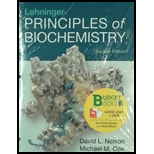
(a)
To determine: The way by which a switchable surfactant is used to clean up and then recover the oil from an oil spill.
Introduction:
The hydrophobic molecules repel water, while they are more soluble in oil than water. The water is a universal solvent, but the nonpolar substances are not soluble in water. This makes very difficult to wash oily dishes and mixing of both water and oil phase. The amphipathic compounds include surfactants that are used to suspend or mix the two phases together for various applications.
(b)
To determine: Which side will the equilibrium shift when the given pKa of amidinium ion is 12.4.
Introduction:
The hydrophobic molecules repel water, while they are more soluble in oil than water. The water is a universal solvent but the nonpolar substances are not soluble in water. This makes very difficult to wash oily dishes and mixing of both water and oil phase. The amphipathic compounds include surfactants that are used to suspend or mix the two phases together for various applications.
(c)
To explain: The reason behind the amidinium form of s-surf is a powerful surfactant and the amidine form is not powerful.
Introduction:
The hydrophobic molecules repel water, while they are more soluble in oil than water. The water is a universal solvent but the nonpolar substances are not soluble in water. This makes very difficult to wash oily dishes and mixing of both water and oil phase. The amphipathic compounds include surfactants that are used to suspend or mix the two phases together for various applications.
(d)
To determine: The form in which there is majority of s-surf in point A and point B.
Introduction:
The hydrophobic molecules repel water, while they are more soluble in oil than water. The water is a universal solvent but the nonpolar substances are not soluble in water. This makes very difficult to wash oily dishes and mixing of both water and oil phase. The amphipathic compounds include surfactants that are used to suspend or mix the two phases together for various applications.
(e)
To explain: The reason behind the rise of electrical conductivity from time
Introduction:
The hydrophobic molecules repel water, while they are more soluble in oil than water. The water is a universal solvent but the nonpolar substances are not soluble in water. This makes very difficult to wash oily dishes and mixing of both water and oil phase. The amphipathic compounds include surfactants that are used to suspend or mix the two phases together for various applications.
(f)
To explain: The reason behind the fall of electrical conductivity from point A to point B.
Introduction:
The hydrophobic molecules repel water, while they are more soluble in oil than water. The water is a universal solvent but the nonpolar substances are not soluble in water. This makes very difficult to wash oily dishes and mixing of both water and oil phase. The amphipathic compounds include surfactants that are used to suspend or mix the two phases together for various applications.
(g)
To explain: The use of “s-surf” to clean up and recover the oil from an oil spill.
Introduction:
The hydrophobic molecules repel water, while they are more soluble in oil than water. The water is a universal solvent but the nonpolar substances are not soluble in water. This makes very difficult to wash oily dishes and mixing of both water and oil phase. The amphipathic compounds include surfactants that are used to suspend or mix the two phases together for various applications.
Want to see the full answer?
Check out a sample textbook solution
Chapter 2 Solutions
Loose-leaf Version for Lehninger Principles of Biochemistry 7E & SaplingPlus for Lehninger Principles of Biochemistry 7E (Six-Month Access)
 BiochemistryBiochemistryISBN:9781319114671Author:Lubert Stryer, Jeremy M. Berg, John L. Tymoczko, Gregory J. Gatto Jr.Publisher:W. H. Freeman
BiochemistryBiochemistryISBN:9781319114671Author:Lubert Stryer, Jeremy M. Berg, John L. Tymoczko, Gregory J. Gatto Jr.Publisher:W. H. Freeman Lehninger Principles of BiochemistryBiochemistryISBN:9781464126116Author:David L. Nelson, Michael M. CoxPublisher:W. H. Freeman
Lehninger Principles of BiochemistryBiochemistryISBN:9781464126116Author:David L. Nelson, Michael M. CoxPublisher:W. H. Freeman Fundamentals of Biochemistry: Life at the Molecul...BiochemistryISBN:9781118918401Author:Donald Voet, Judith G. Voet, Charlotte W. PrattPublisher:WILEY
Fundamentals of Biochemistry: Life at the Molecul...BiochemistryISBN:9781118918401Author:Donald Voet, Judith G. Voet, Charlotte W. PrattPublisher:WILEY BiochemistryBiochemistryISBN:9781305961135Author:Mary K. Campbell, Shawn O. Farrell, Owen M. McDougalPublisher:Cengage Learning
BiochemistryBiochemistryISBN:9781305961135Author:Mary K. Campbell, Shawn O. Farrell, Owen M. McDougalPublisher:Cengage Learning BiochemistryBiochemistryISBN:9781305577206Author:Reginald H. Garrett, Charles M. GrishamPublisher:Cengage Learning
BiochemistryBiochemistryISBN:9781305577206Author:Reginald H. Garrett, Charles M. GrishamPublisher:Cengage Learning Fundamentals of General, Organic, and Biological ...BiochemistryISBN:9780134015187Author:John E. McMurry, David S. Ballantine, Carl A. Hoeger, Virginia E. PetersonPublisher:PEARSON
Fundamentals of General, Organic, and Biological ...BiochemistryISBN:9780134015187Author:John E. McMurry, David S. Ballantine, Carl A. Hoeger, Virginia E. PetersonPublisher:PEARSON





